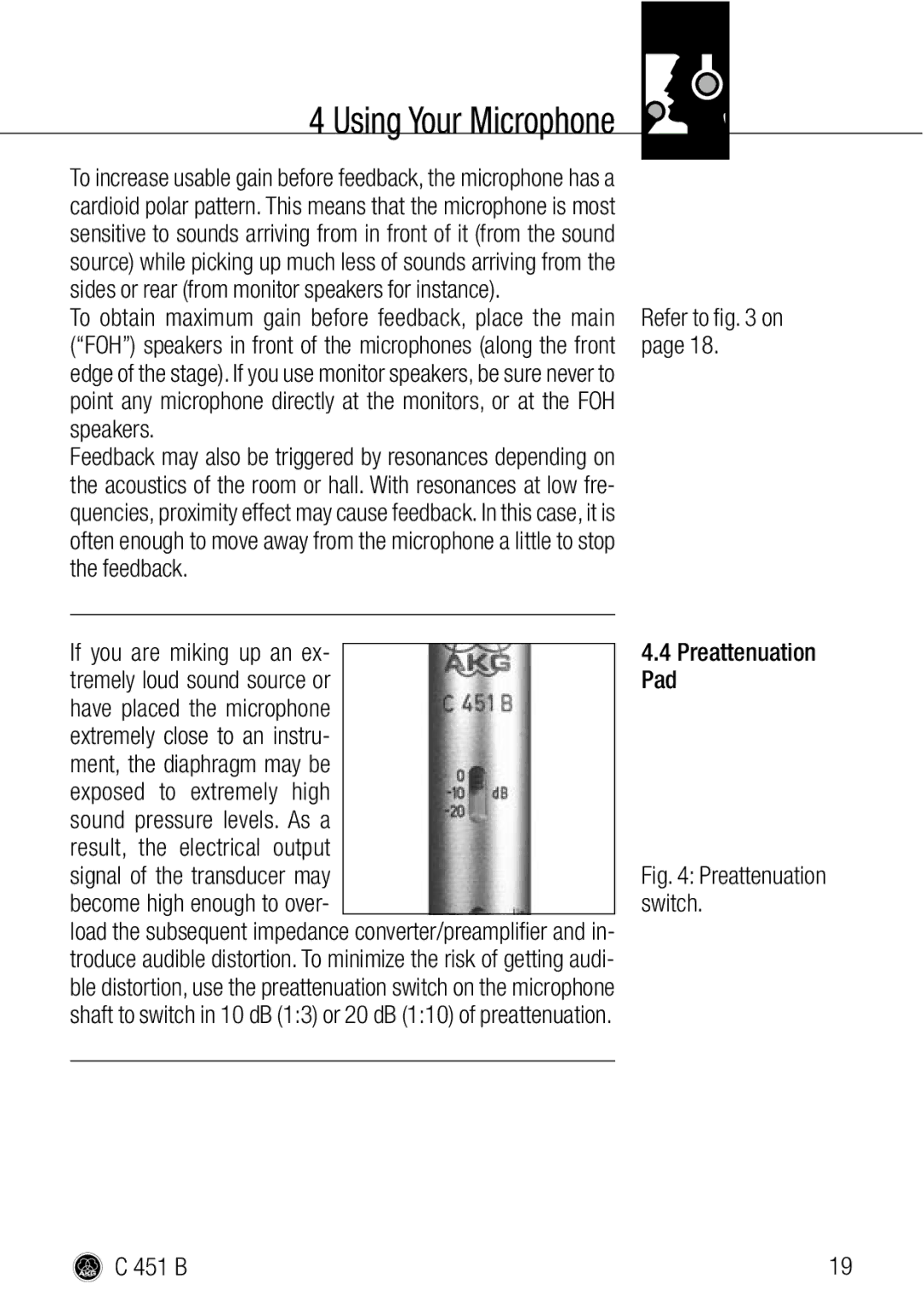
4 Using Your Microphone
To increase usable gain before feedback, the microphone has a cardioid polar pattern. This means that the microphone is most sensitive to sounds arriving from in front of it (from the sound source) while picking up much less of sounds arriving from the sides or rear (from monitor speakers for instance).
To obtain maximum gain before feedback, place the main (“FOH”) speakers in front of the microphones (along the front edge of the stage). If you use monitor speakers, be sure never to point any microphone directly at the monitors, or at the FOH speakers.
Feedback may also be triggered by resonances depending on the acoustics of the room or hall. With resonances at low fre- quencies, proximity effect may cause feedback. In this case, it is often enough to move away from the microphone a little to stop the feedback.
Refer to fig. 3 on page 18.
If you are miking up an ex- |
|
|
| 4.4 Preattenuation |
tremely loud sound source or |
|
| Pad | |
have placed the microphone |
|
|
| |
extremely close to an instru- |
|
|
| |
ment, the diaphragm may be |
|
|
| |
exposed to extremely high |
|
|
| |
sound pressure levels. As a |
|
|
| |
result, the electrical output |
|
|
| |
signal of the transducer may |
|
| Fig. 4: Preattenuation | |
become high enough to over- |
|
| switch. | |
load the subsequent impedance converter/preamplifier and in- |
| |||
troduce audible distortion. To minimize the risk of getting audi- |
| |||
ble distortion, use the preattenuation switch on the microphone |
| |||
shaft to switch in 10 dB (1:3) or 20 dB (1:10) of preattenuation. |
| |||
|
|
|
|
|
C 451 B | 19 |
